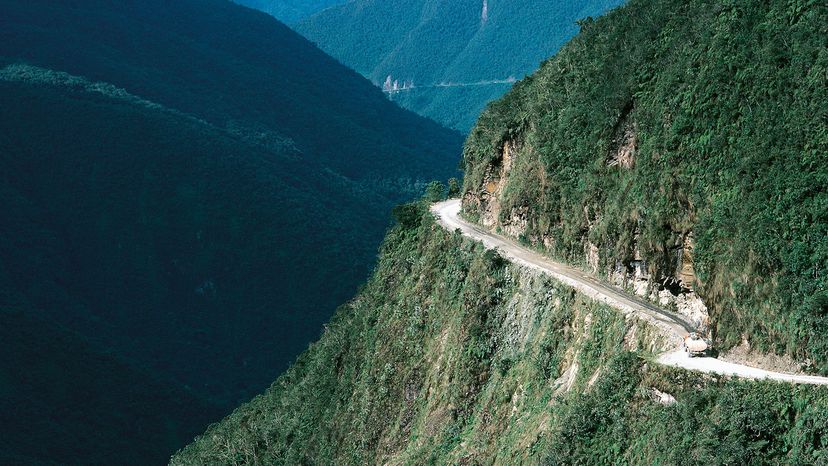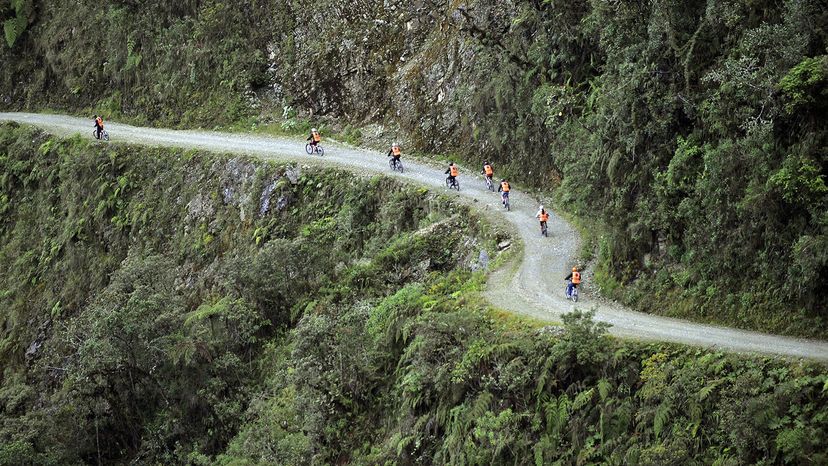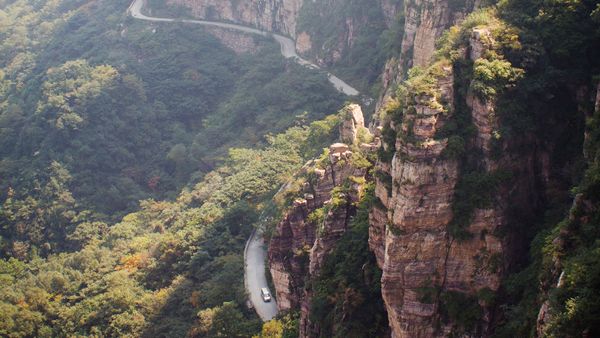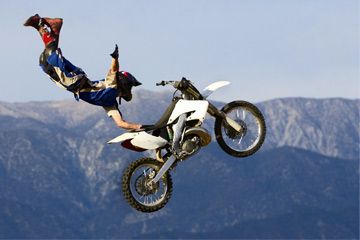
Rocks and mud. Sheer drop-offs. Hundreds of fatalities a year. These are some of the hallmarks of Bolivia's North Yungas Road, aka Death Road. Yet it is these very ominous attributes that draw throngs of people to the spiraling, downhill path every year, where the challenge is to bike down the road — and live to tell about it.
Amazon rainforest with an elevation of 4,826 feet (1,471 meters). Death Road isn't insanely steep; many stretches dish up grades in the single digits. But it's long, filled with sharp curves, and sports a sheer rock face on one side and a steep drop-off into a 2,000-foot (610-meter) abyss on the other. To top it off, the weather here is often rainy and foggy, hampering visibility.
Advertisement
Paraguayan prisoners chipped this narrow gravel path into the side of the Cordillera Oriental Mountain chain in the 1930s, during the Chaco War between Bolivia and Paraguay. For decades, this one-lane road was the only way to travel between Coroico and La Paz, so farmers and merchants routinely risked the trip, even though many paid with their lives.
Experts estimate some 200 to 300 people perished annually on Death Road over the decades, as the vehicles they were traveling in plunged off the precipice. The worst accident is believed to have occurred in 1983, when more than 100 people died in a bus crash at a spot known as Devil's Curve. In 1995, the Inter-American Development Bank dubbed Yungas Road the most dangerous in the world, according to the BBC.
That sinister designation threw an international spotlight on the Bolivian trail. Soon mountain biking tour companies began popping up to guide thrill-seekers down the adrenaline-producing path, which also dished up spectacular vistas. Finally, in 2009 the government built an alternate two-lane highway nearby. Death Road got an upgrade, too, when it was widened to about 10 feet (3 meters). A smattering of guardrails were even installed.
Advertisement


